Dairy housing: ventilation options for free stall barns
Learn about building a well-ventilated barn for dairy cows. This technical information is for Ontario dairy farmers.
ISSN 1198-712X, Published May 2015
Introduction
This Factsheet is written using common units used by ventilation designers and equipment manufacturers for sizing and designing ventilation systems. The units are a combination of imperial and metric. Imperial is common usage in the ventilation industry. For example, temperature is normally stated in Celsius, while air flow measurements are listed in cubic feet per minute (CFM).
Barn environment
What kind of barn environment do you want? Decide whether it's going to be a cold-, moderate- or warm-environment barn (Figure 1) early in the planning process, as this will make a great deal of difference to the type of barn construction, ventilation system and manure handling system chosen. In other words, do you want a barn with no insulation, minimum insulation or full insulation?
The key to maintaining a healthy barn environment is to allow the barn temperature to drop with falling outside temperatures. It is healthier for the cows to keep the barn cold and fresh (well ventilated) than to close everything up to keep the barn warm or above freezing, but allow the humidity to rise.
A cold-environment barn is one with no insulation under the roof steel or in the walls.
A modified-environment barn has a minimum of insulation under the roof steel and none, or very little, in the walls.
A warm-environment barn is a barn with a fully insulated attic (R30) and insulated walls (R20).
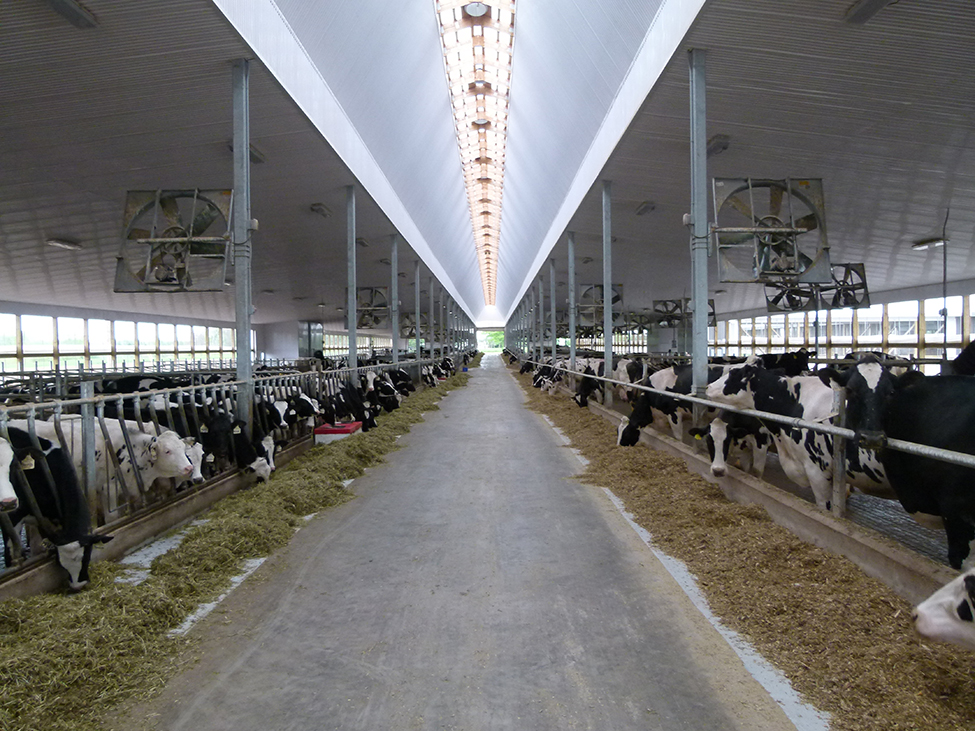
Figure 1. Barn with fully insulated attic.
Insulation
Insulation helps improve ventilation. It is used to reduce the flow of heat or cold in a barn. In cold weather, a small amount of insulation under the roof steel with an R-value of 5 to 10 helps reduce condensation and keep the barn cooler, as moisture from warm air will condense on cold surfaces. In warm weather, insulation reduces the flow of heat into the barn and keeps it cooler.
Protect exposed insulation with bird screen to prevent damage. Installing an attic and increasing the amount of insulation in the ceiling will allow the barn to be ventilated better at cooler temperatures.
Ventilation
The purpose of ventilation is to provide fresh air to:
- control moisture produced by the cows through respiration, water spillage, manure and urine in cold weather
- control heat produced by the cows in hot weather
- remove odours and gases produced by cows from manure and urine, and by breathing out C02. A ventilation rate that controls moisture and heat will usually remove odours and gases as well, except in extremely cold weather, when it should be maintained at four air changes per hour
Distribute fresh air evenly throughout the barn to prevent dead spots and avoid drafts in the winter and remove heat in the summer.
Natural ventilation
Natural ventilation (Figure 2), or mechanical ventilation, works by replacing stale barn air with fresh outside air. In the winter, the barn might be only slightly warmer than outside, but as cold air enters the barn, it expands as it warms up, giving it the ability to hold more moisture. The outside air mixes with the inside air, absorbs the moisture and gases and then has to be removed from the barn.
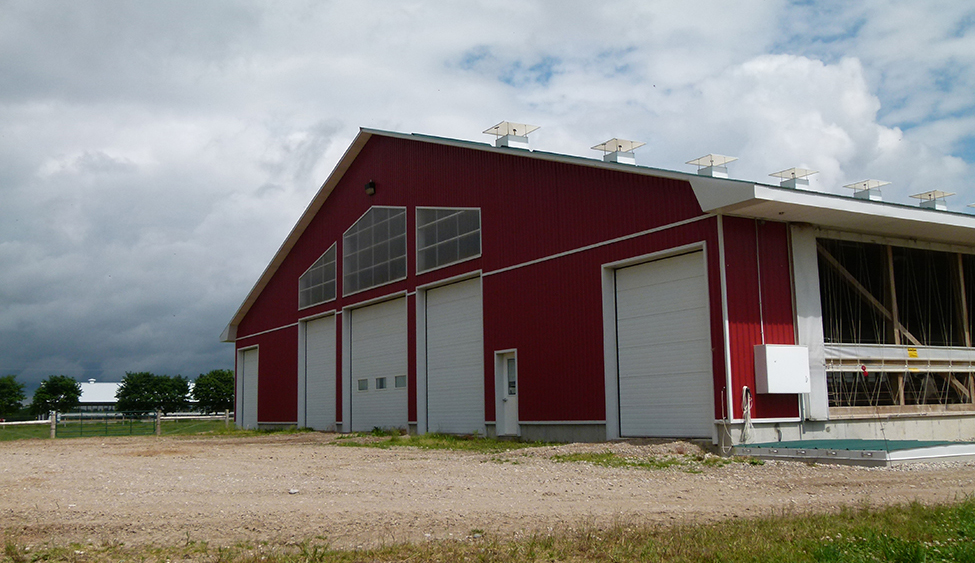
Figure 2. Natural ventilation for a dairy housing.
Summer ventilation
Natural ventilation relies on the natural forces of wind and the thermal properties of air to function properly. Design the natural ventilation system to work in a cross-flow mode in the summer. Orient the barn perpendicular to the summer winds so that they can blow across the narrowest cross-section of the barn. Locate the barn so that the winds are not restricted by other buildings from reaching the barn. Ensure parallel buildings are at least 30.5 m (100 ft) apart. Any adjacent buildings will cause a downwind effect at a distance of 10 times their height.
Winter ventilation
In the winter, the barn ventilates naturally because of thermal buoyancy. Heat produced from the cows will cause the air to rise, drawing in fresh air and exhausting it through ventilation openings at the ridge. Winds blowing over the ridge of the barn will work to draw air out.
Spring and fall ventilation
In the spring and fall, ventilation works as a result of a combination of cross-flow and thermal buoyancy. Inlets and exhaust have to be adjusted to make use of the wind and the natural tendency for heated air to rise.
Natural ventilation components
There are three main components to a natural ventilation system:
Sidewall inlets
Large, adjustable sidewall inlets make use of prevailing winds. Build barns with a minimum sidewall height of 4 m (12 ft) and as high as 5 m (16 ft) to make use of natural winds. Cover the inlet opening with an adjustable curtain. Depending on the sidewall height, the curtain may be a single curtain or split in two. With a split curtain, the bottom portion remains closed in the cold weather, and only the top is adjusted. This allows for less wear and tear on the curtain and less strain on the controls. In warm weather, the bottom curtain is rolled up, and the entire sidewall is open.
Bird screen
Cover the top portion of the wall with bird screen (Figure 3). When the entire wall is open, doors are probably open as well, and birds cannot be prevented from entering. Use a bird screen that is strong enough and fine enough to prevent birds from entering, but not so coarse that it restricts air flow.
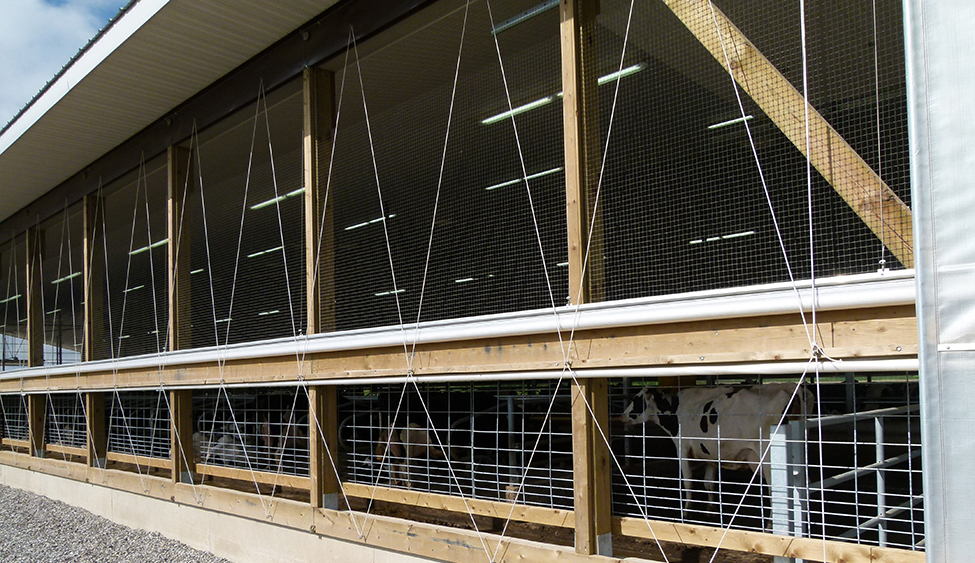
Figure 3. Sidewall inlet with bird screen on the top section
Ridge exhaust
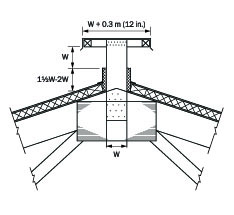
Figure 4. Open ridge for cold environment barns
The ridge exhaust system can take many forms:
- open ridge - an open ridge is suitable for cold-environment barns (Figure 4) where no control over the inside temperature is desired. Design the open ridge to provide 2.5-4 cm (1-1.5 in.) of opening for every 3 m (10 ft) of barn width. It should be covered to reduce the entry of rain and snow, and should stop 2.5–3.5 m (8–12 ft) from each end of the barn to reduce down drafting.
- chimneys - chimneys are a good option when some control over the inside environment is desired. They will reduce the amount of rain or snow entering a barn while still providing good ventilation. Most chimneys are equipped with a damper, which can be used to control the outflow of air. The damper doesn't fit tight and has about a 2.5-cm (1-in.) gap around it, so even when closed it will allow for minimum ventilation. Dampers do not have to be adjusted daily but should be adjusted seasonally. Provide 0.046m2 (0.5 ft2) of chimney opening for every 9.3 m2 (100 ft2) of floor area. Build chimneys no more than 1.2 m x 1.2 m (4 ft x 4 ft) to prevent down drafting and never more than about 6-7.5 m (20-24 ft) apart.
- light vents - a number of light ridge options provide a controllable ridge exhaust combined with a translucent ridge cap to allow more natural light to enter the barn.
- overshot roof - this ridge vent design (Figure 5) is constructed by extending the top chord of the truss in the same direction as the prevailing wind. This concept is not new. The difference from previous designs is to install an adjustable curtain to control the outflow of air. The amount of opening should be at least 2.5-4 cm (1-1.5 in.) of ridge opening for every 3 m (10 ft) of barn width but can be more, since the amount of opening can be adjusted. The overshot roof should stop 2.5-3.5 m (8-12 ft) from each end of the barn to reduce down drafts.

Figure 5. Overshot roof for ridge exhaust.
Control systems
Control systems are necessary to provide a stable environment within the barn:
- ridge control - the ridge opening only has to be adjusted seasonally, so a manual adjustment system is sufficient
- sidewall opening control - the sidewall openings require continual adjustment, using an automatic control system, to maintain a constant temperature within the barn. If the barn is more than 30 m (100 ft) in length, divide the curtain system in two so that the barn can be controlled in zones
Fan ventilation
The principles are the same for fan ventilation and natural ventilation. With fan ventilation, the fan is providing the power to move and exchange the air. The ventilation rate (Table 1) is based on the size and number of cows.
The winter ventilation rate should not drop below four air changes per hour in order to provide a minimum of fresh air. The practical summer maximum should not exceed 1,000 CFM/cow.
| Ventilation rate | CFM/1,000 lb | CFM/1,500 lb |
|---|---|---|
| Winter minimum | 25 | 40 |
| Summer maximum | 400 | 600 |
Fans
Fans provide the power to move and exchange the air (Figure 6). Their air-moving capacity is based on their size and efficiency. Select a range of fan sizes to provide the air flow from winter minimum to summer maximum. Variable-speed fans are not very efficient when they are set to run at one-third to one-half their capacity, so one size does not fit all. Use smaller fans to provide the winter minimum ventilation rate, combined with larger fans to provide the range to the summer maximum.
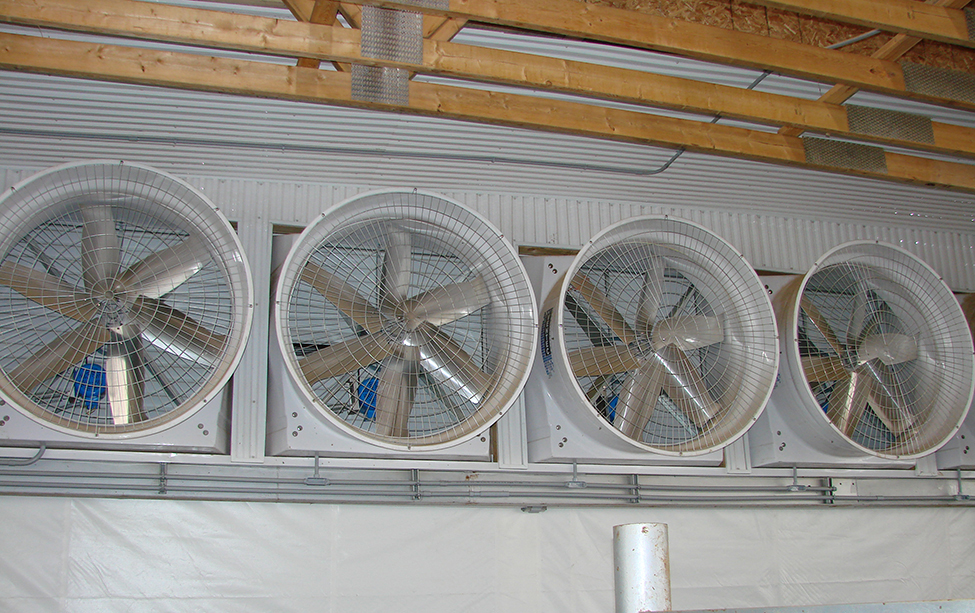
Figure 6. Fans provide power to move and exchange air.
Inlets
There are a variety of inlet types and styles that can be used to provide fresh air.
Manually controlled inlets are adjusted using a boat winch, self-adjusting inlets are adjusted using counter weights, and automatically controlled inlets are adjusted with a servo-motor. Adjust inlets to provide enough air speed (800-1,000 feet per minute (FPM)) to mix the air throughout the room. Fan controls work from the temperature. Adjust controllers so that each successive step in ventilation no more than doubles the current ventilation rate.
Heat stress
The ideal ambient temperature for a dairy cow is 0°C-20°C. At temperatures above 20°C, cows start to use energy to cool themselves, instead of producing milk.
Heat loss from a cow occurs primarily by conduction and convection, as well as by evaporation. As the temperature rises, it becomes increasingly difficult for a cow to dissipate heat. Rising relative humidity also affects a cow's ability to lose heat via evaporation. Since heat loss depends both on temperature and relative humidity, a temperature-humidity index (THI) has been developed to indicate the amount of heat stress experienced by a cow.
Options to cool cows
In general, there are two cooling strategies. One is to increase the rate of heat transfer between the cow and her environment, and the other is to modify the environment to reduce the heat stress placed on the cow. Practically, this means increasing the convective heat transfer rate by increasing the air speed over the cow and increasing the evaporative cooling rate by wetting the cow or the air around the cow.
Panel or basket fans
Panel or basket fans are usually selected for cooling. Select fans based on their capacity and the air velocity they produce. Select fans that will provide:
- at least 500 CFM/cow, up to 1,000 CFM/cow
- air velocities in the range of 220-500 FPM (2.5-5.5 mph)
Typically, these fans are 60-120 cm (24-48 in.) in diameter and provide low volumes of air but at a high speed (LVHS). Fans from a reputable supplier effectively maintain adequate airflow to a distance of 10 times the fan diameter.
Mount the fans high enough to provide clearance for any equipment used in the alleys and with about 2.5 m (8 ft) clearance above the free stalls to keep the cows from damaging them (Figure 7). Place fans so they blow air in the direction of the prevailing winds, spaced at a distance of 10 times their diameter.
Tilt fans downwards to aim their airflow at a point directly below the next fan in line. In holding areas or when blowing across the width of the barn, install fans 2.5-3.5 m (8-12 ft) apart and use 45-60 cm (18-24 in.) fans.
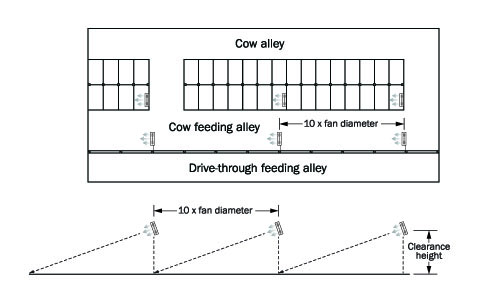
Figure 7. Placement of panel or basket fans in a free stall barn.
In summary:
- place fans over the alley next to the feed manger and over the rows of free stalls in a four-row barn
- in a six-row barn, it may be necessary to place a row of fans over the outside row of free stalls
- space fans according to their diameter
- start fan operation when the barn temperature reaches 21°C
- all fans should be running when the barn temperature reaches 27°C
Big ceiling fans
An alternative to the panel fan for hot-weather ventilation is the high-volume, low-speed (HVLS) ceiling fan (Figure 8). Typically, 6-7.5-m (20-24-ft) diameter fans are installed 15-18 m (50-60 ft) apart, along the length of a free-stall barn. Fans run at approximately 50 rpm and will move from 150,000 CFM up to almost 400,000 CFM of air. Air speeds are highest directly under the fan and decrease with increasing distance away from the fan.
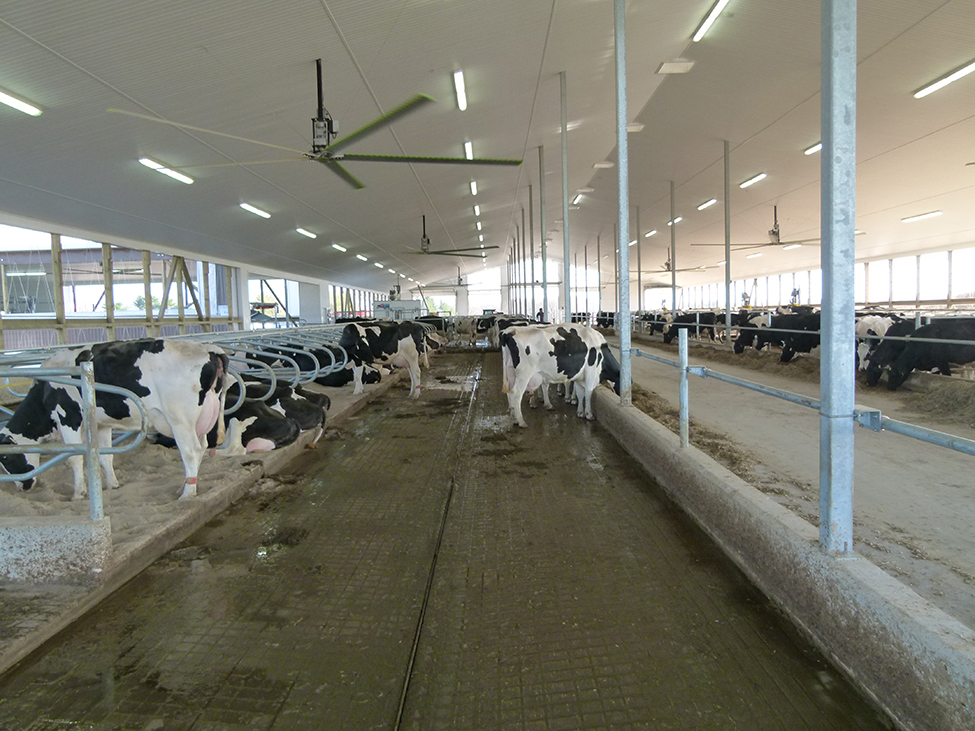
Figure 8. Place HVLS fans over the free stalls for cooling.
Guidelines for installing HVLS fans:
- in four-row barns, space 6-7.5-m (20-24-ft) diameter fans 15-18 m (50-60 ft) apart
- in six-row barns, HVLS fans do not provide good coverage to the outside row of free stalls unless two rows of fans are used
- a 7.3-m (24-ft) diameter fan should have at least 76 cm (30 in.) clearance at the blade tips
- mount fans at least 0.3 m (1 ft) higher than the highest overhead door for safety
- Install variable frequency drive (VFD) controllers properly to reduce radio interference:
- make sure controllers are grounded properly
- use the correct type of shielded cable
- locate controllers within 3 m (10 ft) of the fan
Some additional observations:
- producers notice fewer birds in the barns when the HVLS fans are running
- fans can be operated at very low speeds during the winter to keep the air mixed
Tunnel ventilation
Tunnel ventilation is another option for increasing air flow to reduce heat stress (Figure 9). With a tunnel ventilation system, large fans, 120-180 cm (48-72 in.) in diameter, are used to move air through a barn at an air speed fast enough to provide convective cooling of the dairy cattle. Air enters the barn at one end and is exhausted at the other. Since the air speed depends on the cross-section of the barn, long, narrow barns tunnel-ventilate more efficiently than short wide ones.
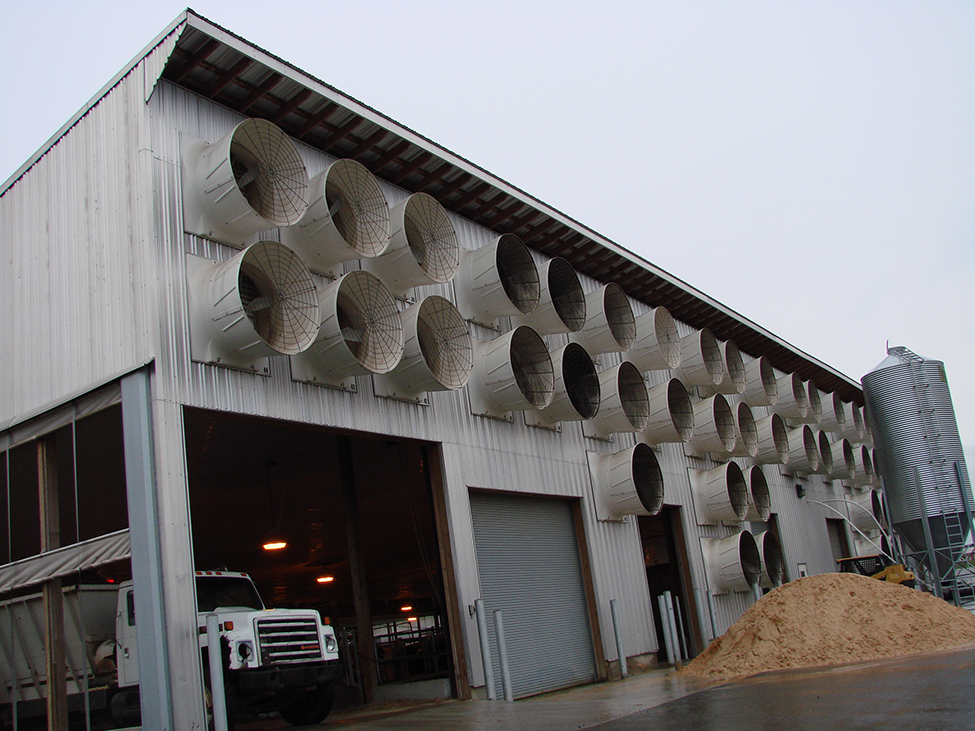
Figure 9. Tunnel ventilation for cooling cows.
General recommendations for tunnel ventilations:
- air speed of 400-600 FPM
- air exchange rate of 1,000 CFM/cow
- <1 air change/min
- inlet air speed of <500 FPM
To calculate ventilation requirements at different air flow rates, use the formulas Q = VA or A = (Q/V), where:
- Q = quantity of air (CFM)
- V = air speed (FPM)
- A = area of building (ft2)
Fan capacity is directly proportional to the cross-section of the barn - the smaller the cross-section, the fewer fans required to provide the desired air speed. Producers have achieved some success by hanging curtains from the ceiling to reduce the cross-section dimension. Place curtains no more than 12 m (40 ft) apart.
Control fans with a thermostat, but ensure they also have on/off switches for emergency shut-off.
- start operation of fans at 21°C
- run all fans when the barn temperature reaches 27°C
- set thermostats to turn fans on at every 1°C interval
- ensure fans no more than double the previous airflow as they turn on
In theory, all wall openings should be closed between the exhaust fans at one end of the barn and the end wall openings at the other. In practice, opening the curtain slightly (about 5 cm (2 in.)) from the bottom provides some fresh air along outside rows of stalls.
Some tunnel ventilation fans are available with two-speed motors. This would allow for some cooler weather operation. This may help with air distribution in the barn during cold weather.
During cold weather when the fans are not operating, it will be necessary to cover them with insulated panels to minimize heat loss and air leakage.
Sprinkler systems
Using sprinkler systems with fans can provide additional cooling (Figure 10). The sprinklers create droplets that wet the cow's hair coat to the skin. Fans force air over the cow's body, causing evaporative cooling to take place on the skin and hair coat. Heat from the cow's body causes the moisture to evaporate. The droplet size should be large enough to wet the skin surface and must be applied intermittently to allow time for the moisture to evaporate from the skin.
A sprinkler system uses simple, readily available and easily maintained components and should:
- use a timer to run sprinklers for 1-3 min, every 15-30 min
- provide enough water to soak the skin but not wet the udders
- turn sprinklers regularly to allow for evaporation
- use low-pressure (20-40 psi) nozzles
- use solid-cone coarse droplet spray nozzles with flow rates between 0.2-0.5 USGPM (U.S. gal/min)
- use 180° nozzles (half circle) along feed bunk
- use 360° nozzles (full circle) over holding area
- start system at temperatures over 25°C-27°C
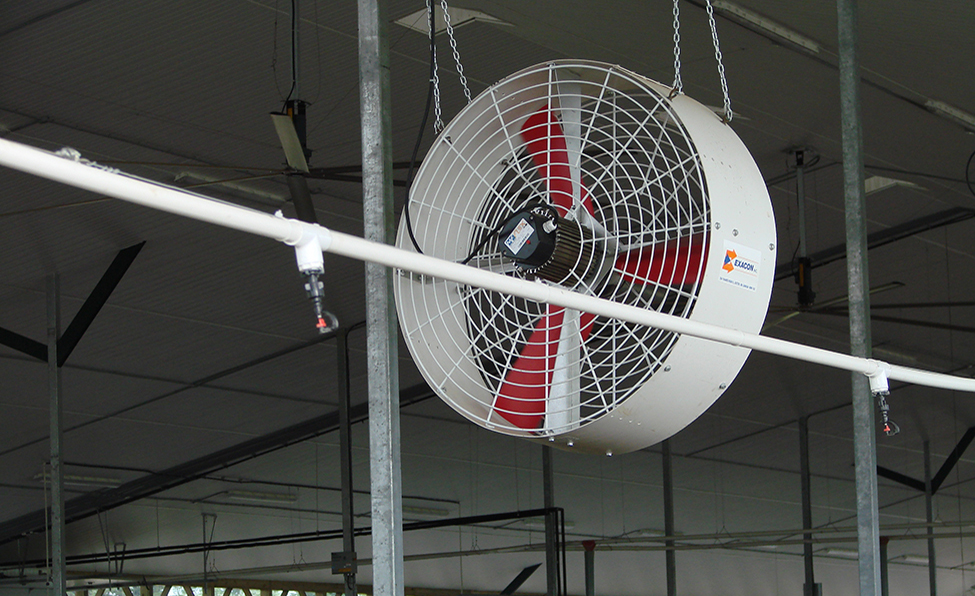
Figure 10. Use sprinklers with fans to wet, then dry the cow for evaporative cooling.
Variable-rate soaker systems are becoming more popular. They increase the sprinkler frequency as the temperature rises as follows:
- 21°C-27°C every 15 min
- 27°C-32°C every 10 min
- >32°C every 5 min
Fans should run continuously when the sprinklers are on. If water is being blown on the feed or on the stalls, the droplet size is too small, or the fans need repositioning.
Misting systems
Misting systems are also effective for cooling cows. They cool the air around the cows without wetting the cows or the surroundings directly. The amount of cooling achieved depends on the air temperature, relative humidity and the amount of moisture evaporated. Misting systems use high-pressure nozzles (200 psi) to inject moisture directly into the air stream. The nozzles are usually installed in a ring in front of the fan, but they can also be used with tunnel ventilation systems by injecting water vapour close to the inlets.
Ventilating and cooling low-profile cross-ventilated (lpcv) barns
As the name suggests, the low-profile building looks like an industrial building with a roof slope ratio of 0.5 to 12 and a wall height at the outside of 3.5-4 m (12-14 ft). The width of the barn is proportional to the number of stalls but is about 66 m (215 ft) wide for an eight-row tail-to-tail configuration, and 70 m (230 ft) wide for an eight-row head-to-head configuration. The barn is cross-ventilated with an open curtain wall on one side and a bank of fans on the opposite side to create a "tunnel ventilation" effect across the width of the barn. Baffles installed to a height of 2-2.5 m (7-8 ft) feet above the floor are used to keep the air flow down at cow level (Figure 11). Cooling panels or misters are used on the intake side of the barn for summer cooling.
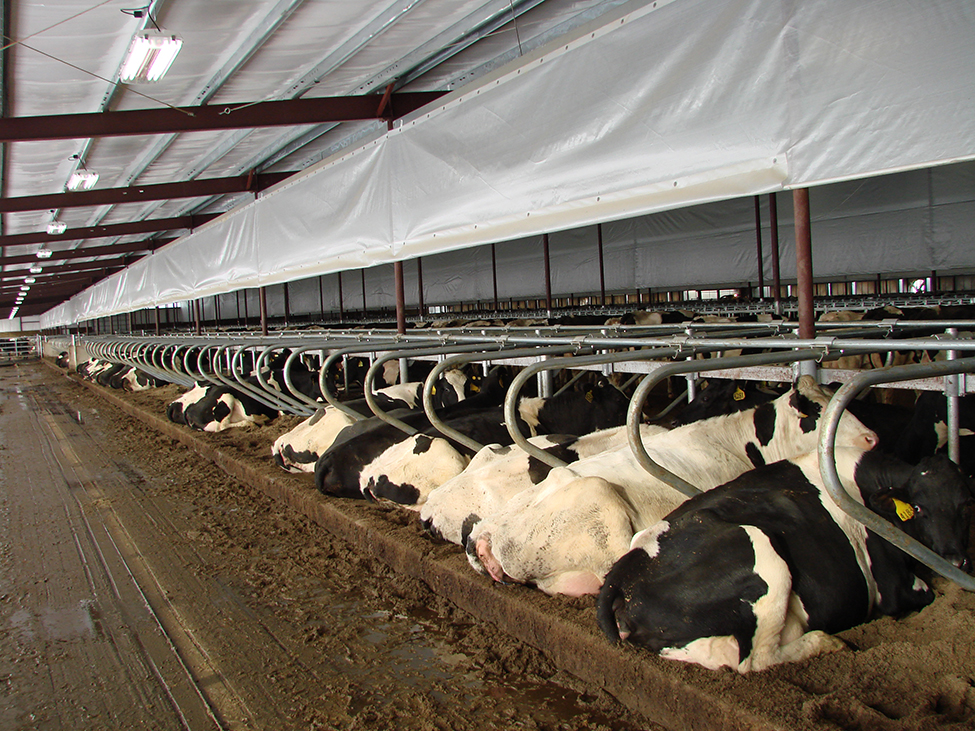
Figure 11. Baffles are used to increase air flow at cow level.
Summary
Follow a three-step process to reduce heat stress in dairy barns:
- Ensure that the natural ventilation system is working as well as it can be. Reduce any barriers to natural air flow around buildings. Check the wall design. (Bird screening can greatly reduce air flow.)
- Provide adequate water space and volume. Water consumption increases as temperature increases. Have the water where the cows need it and have an unrestricted supply when they need it.
- Supply supplemental cooling in the form of fans over the cows and sprinkler systems. When natural ventilation alone can no longer look after the heat load, install supplemental fans. Fans over the cows can increase their convective cooling rate significantly. Use sprinkler or fogging systems to increase the evaporative cooling rate when additional cooling is needed.
Resources
Ventilation for Livestock and Poultry Facilities. 2010. OMAFRA publication 833.
This factsheet was written by Harold K. House, P.Eng., Engineer, Dairy and Beef Housing and Equipment, Clinton, OMAFRA (retired).